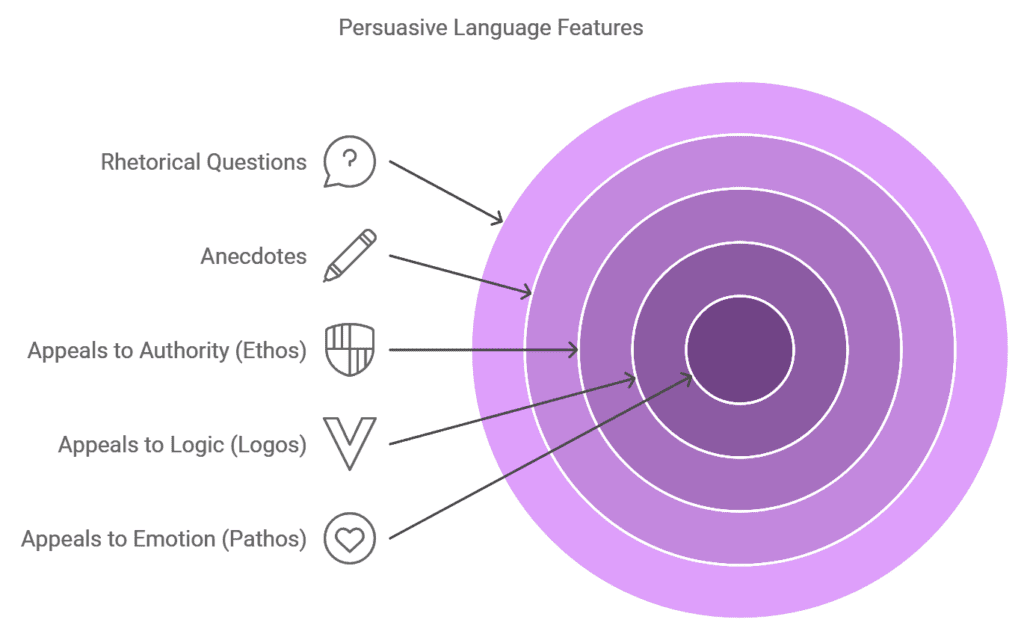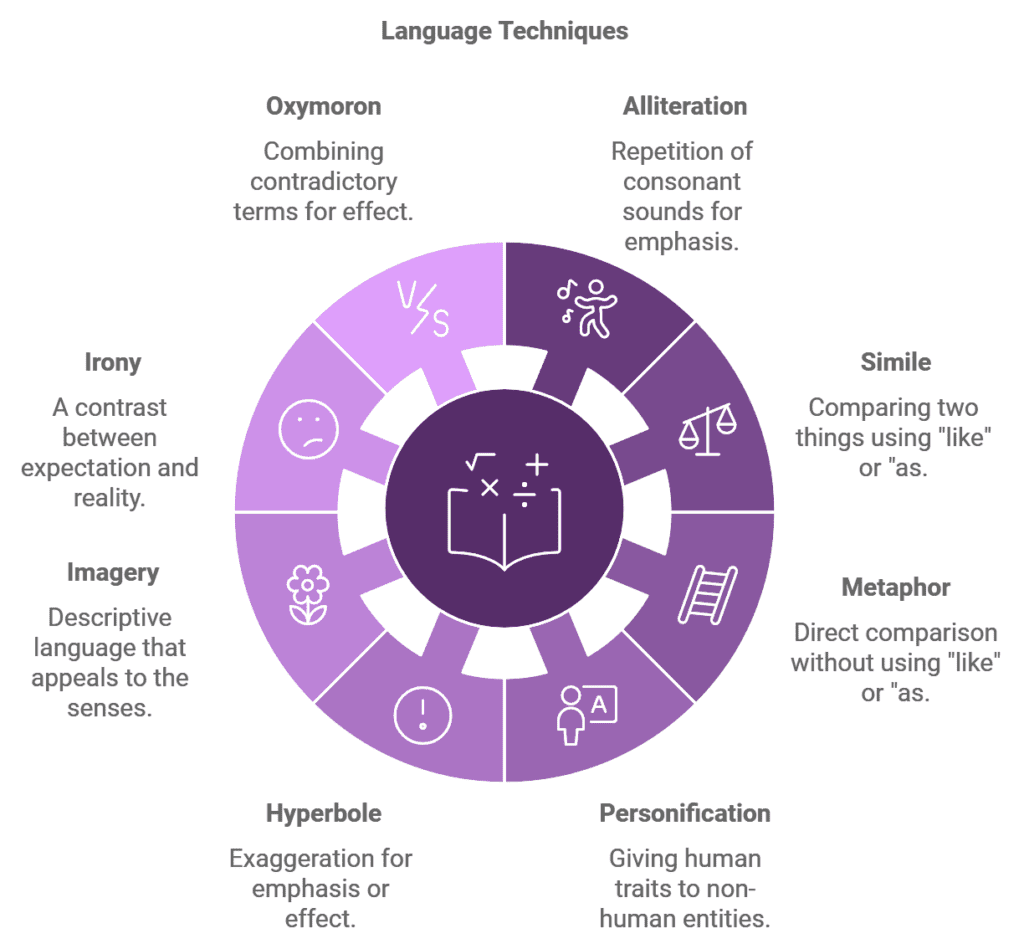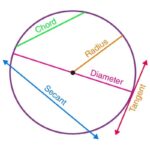Language features are the secret tools that transform ordinary writing into something vivid, persuasive, and unforgettable. From building tension in a story to adding rhythm to poetry, these features play a crucial role in how ideas are expressed and understood. For students preparing for their GCSE and A-Level exams, mastering language features is essential, as they are a key part of both analysis and writing assessments.
Whether you’re crafting an essay, analysing a poem, or breaking down a speech, knowing how to spot and use techniques like metaphors, alliteration, and irony will give you a distinct advantage. This guide will walk you through the most important language features, explaining how they work and why they matter. By understanding these tools, you’ll be better prepared to interpret texts creatively, write with impact, and impress examiners with your insights and style. Let’s explore how language features can unlock your full potential in English!
What Are English Language Techniques and Devices?
When it comes to language features, there are three basic types: Syntactic, Semantic, and Pragmatic. Here’s an overview of each. Language techniques and devices are tools writers use to convey meaning, create imagery, and evoke emotions. For students, mastering these techniques is invaluable as it enhances both analytical and creative writing skills. These devices allow you to develop persuasive arguments, craft vivid descriptions, and engage readers through thoughtful word choices. By recognizing and applying these features, students can elevate their writing and better interpret literary texts.
How Language Techniques Enhance Writing Skills
Language techniques help students bring variety, clarity, and creativity to their writing. They encourage the use of descriptive language, which helps readers visualise the scene and connect emotionally. Furthermore, techniques like metaphors, similes, and personification can make arguments more convincing and stories more compelling. Whether used in persuasive essays or creative writing, these devices enrich expression and help you develop a unique writing style.

Persuasive Language Features
Persuasive devices are specific techniques, used in both writing and speech, to convincingly guide the audience toward adopting a particular viewpoint, taking action, or, moreover, engaging emotionally. Indeed, persuasive language features are essential for crafting compelling arguments in essays, speeches, advertisements, and other media. By effectively using persuasive devices, writers and speakers can significantly influence their audience, appealing to their emotions and, in turn, reinforcing their message.
What Are The Key Persuasive Language Features?
Rhetorical Questions
Rhetorical questions are questions asked for effect rather than to elicit an actual answer. They encourage the audience to think about the topic. Challenging you to pause and consider a point from a different angle.
- Example: “Isn’t it time we took a stand?
- Effect: Rhetorical questions engage readers by prompting them to reflect on the issue. They add drama and intensity making the argument more personal and impactful.
Repetition
Repetition is the art of making something stick by saying it again… and again. Repeating words, phrases, or ideas to reinforce a message.
- Example: “Education is freedom. Education is growth. Education is empowerment.”
- Effect: Repetition creates rhythm and impact, driving home the message. It makes key points linger in the audience’s mind, adding power to ideas and often giving speeches or texts a memorable, almost musical quality.
Emotive Language
Emotive language uses words that evoke strong emotions to sway the audience. It makes issues feel personal, sparking an emotional reaction.
- Example: “Innocent lives are being shattered daily by these harmful practices.”
- Effect: Emotive language can trigger empathy, anger, or compassion, appealing directly to the audience’s emotions and helping to drive home the argument.
Alliteration
Alliteration uses repeated consonant sounds to create a catchy, rhythmic effect. It’s a technique often seen in poetry but also powerful in persuasive writing and speeches.
- Example: “Fight for fairness, freedom, and future.”
- Effect: Alliteration adds rhythm and makes phrases more catchy, which can help the message linger in the audience’s mind.
Statistics and Facts
Statistics and facts are the heavyweights of persuasion, providing concrete evidence that backs up claims. Numbers and facts build credibility, making arguments harder to dismiss.
- Example: “90% of respondents agree that recycling should be mandatory.”
- Effect: Facts and statistics build credibility, giving the argument a factual foundation that makes it harder to dispute.
Anecdotes
Anecdotes are short, personal stories that illustrate a point. They connect ideas to real-life experiences, making abstract ideas feel concrete and relatable.
- Example: “When I first moved to this city, I struggled to find affordable housing.”
- Effect: Anecdotes make arguments more relatable and memorable, helping the audience to connect emotionally with the topic.
Direct Address
Direct address speaks directly to the audience, using words like “you” and “we.” It feels personal, almost as if the writer or speaker is having a one-on-one conversation with you.
- Example: “You can make a difference today.”
- Effect: Direct address involves the audience, making them feel personally connected to the message and encouraging a sense of responsibility or involvement. It’s inclusive and engaging, helping to foster a connection that makes readers more receptive to the message.
Hyperbole
Hyperbole is exaggeration for dramatic effect. It’s not about lying, but about emphasising a point in a way that grabs attention, often adding humour or intensity.
- Example: “This is the opportunity of a lifetime!”; “I’ve told you a thousand times!;
- Effect: Hyperbole grabs attention and emphasises the significance of an issue, often adding emotional intensity to the argument.
Appeals to Authority (Ethos)
Ethos builds credibility by referencing respected figures, experts, or organisations. It’s a way of saying, “Don’t just take my word for it—this person agrees.”
- Example: “According to the World Health Organization…”
- Effect: Appeals to authority enhance credibility, lending weight to the argument by showing that respected figures or sources agree with the stance.
Appeals to Logic (Logos)
Logos appeals to the logical side of the audience, using clear reasoning, facts, and step-by-step arguments. It’s about creating a logical flow that “just makes sense.”
- Example: “If we reduce emissions, we can slow down climate change.”
- Effect: Logical appeals provide a rational basis for the argument, making it harder to dismiss and appealing to the audience’s sense of reason.
Appeals to Emotion (Pathos)
Pathos taps into the audience’s emotions, whether it’s compassion, anger, or hope. By stirring emotions, pathos makes arguments feel deeply personal and urgent.
- Example: “Imagine the future we could give our children if we act now.”
- Effect: Appeals to emotion resonate deeply, motivating action through feeling rather than pure logic. Pathos makes issues feel immediate and important, often pushing people to act out of empathy or moral conviction.
What Are General Effects of Persuasive Language Features on Text?
As you can guess, Persuasive devices are powerful because they make arguments more engaging, relatable, and convincing. Here are some ways these devices shape the text:
- Engagement: Devices like rhetorical questions, anecdotes, and direct address actively involve the reader, making them feel part of the conversation.
- Memorability: Repetition, alliteration, and emotive language make key ideas stand out and linger in the audience’s mind, reinforcing the message long after reading.
- Credibility: By using facts, statistics, and appeals to authority, writers build trust with the audience, making their arguments more believable.
- Emotional Connection: Emotive language, hyperbole, and pathos tap into the reader’s feelings, creating a sense of empathy or urgency that motivates action.
- Clarity and Persuasiveness: Logos and appeals to reason provide a logical structure, making arguments clear, well-organised, and difficult to counter.
Remember, persuasive Language Features are essential for impactful communication, enabling writers and speakers to present arguments in a way that resonates with their audience. Mastering these techniques can empower you to strengthen your own writing, whether you’re crafting an essay, delivering a speech, or constructing an argument.

Language Techniques To Enhance Writing
Language techniques are tools that writers and speakers use to enhance their writing, create imagery, evoke emotions, and convey deeper meanings. These techniques make text more engaging, persuasive, and memorable, enabling the reader to connect with the ideas in a vivid way. Understanding language techniques is valuable for students as it allows them to analyse texts critically and improve their own writing.
Key Language Features
Alliteration
Alliteration is like a secret rhythm in writing. By repeating the same initial consonant sound, it creates a catchy, flowing beat that sticks with you.
- Example: “The swift, silent serpent slithered silently.” “Peter Piper picked a peck of pickled peppers.”
- Effect: Alliteration creates a musical quality in text, making phrases more memorable and engaging. It also emphasises particular words, drawing attention to specific ideas or themes.
Simile
A simile is a comparison between two different things using “like” or “as” to create imagery.
- Example: “Her smile was as bright as the sun.”
- Effect: Similes paint a vivid picture by linking familiar concepts to the description, helping readers visualise or relate to the subject more easily.
Metaphor
A direct comparison between two unrelated things, stating one thing is another to add meaning. They don’t just compare; they transform.
- Example: “Time is a thief.”
- Effect: Metaphors add layers of meaning and allow readers to interpret ideas on a symbolic level, making writing more nuanced and thought-provoking.
Personification
Personification gives human qualities to inanimate objects or animals, making them feel alive and relatable.
- Example: “The wind whispered through the trees.”
- Effect: Personification helps readers connect emotionally with inanimate objects or ideas, adding life and movement to descriptions.
Hyperbole
Hyperbole is exaggeration taken to the extreme. It’s about emphasising a point by going over the top.
- Example: “I’ve told you a million times.”
- Effect: Hyperbole adds intensity and makes emotions or situations feel larger-than-life, often creating humour or drawing strong attention to the statement.
Imagery
Descriptive language that appeals to the senses, painting a picture in the reader’s mind.
- Example: “The crisp autumn leaves crunched underfoot, filling the air with a woody scent.”
- Effect: Imagery helps readers visualise scenes and feel the atmosphere, making the text more immersive and engaging.
Irony
Irony is the twist that turns expectations upside down. It’s the difference between what is said and what is actually meant, often with a dash of humour or sarcasm.
- Example: “A fire station burning down.”
- Effect: Irony adds depth and complexity, allowing readers to consider different perspectives and adding a layer of humour or tension.
Oxymoron
The combination of two contradictory words for a dramatic or thought-provoking effect.
- Example: “Deafening silence.”
- Effect: Oxymorons draw attention to complex ideas or situations that contain opposing elements, adding intrigue and encouraging readers to think critically.
Symbolism
Symbolism is when objects, colours, or actions represent something beyond their literal meaning, like an icon that stands for a bigger idea
- Example: “A dove symbolising peace.”; In The Great Gatsby, the green light symbolizes Gatsby’s hope and unattainable dreams.
- Effect: Symbols add layers of meaning, creating connections between the story and larger themes. They invite readers to interpret and reflect, adding a depth that resonates beyond the story itself.
Allusion
A brief reference to a well-known person, place, event, or work, drawing on the reader’s background knowledge.
- Example: “He met his Waterloo.”
- Effect: Allusions create connections to broader ideas or histories, making the text richer and more layered for readers familiar with the reference.
Foreshadowing
A technique that hints at events to come, building suspense or anticipation.
- Example: “Little did he know, this would be his last day in the village.”
- Effect: Foreshadowing creates tension and prepares readers emotionally, making the narrative more engaging as they anticipate what will happen next.
Juxtaposition
Placing contrasting ideas or images side by side to highlight their differences.
- Example: “The beauty and the horror of war.”
- Effect: Juxtaposition emphasises the distinct characteristics of each element, making contrasts more striking and thought-provoking.
Euphemism
A mild or less direct word used to replace a harsher or blunt one, often for politeness.
- Example: “He passed away” instead of “He died.”
- Effect: Euphemisms soften the impact of difficult subjects, making the text more sensitive and approachable.
Tone
The writer’s attitude towards the subject, shaping how the reader perceives the text.
- Example: An optimistic tone can create a hopeful atmosphere, while a sarcastic tone might add humour.
- Effect: Tone helps set the mood, influencing how readers feel and interpret the message.
Mood
The emotional atmosphere created within the text, affecting how the reader feels.
- Example: A tense mood in a suspenseful scene, or a calm mood in a reflective passage.
- Effect: Mood immerses the reader in the narrative, aligning their emotional response with the intended experience.
General Effects of Language Techniques on Text
- Engagement: Language techniques capture attention, making the text more interesting and immersive.
- Emotional Impact: Language Features like imagery, personification, and emotive language evoke emotions, creating a personal connection with the reader.
- Clarity and Emphasis: Techniques like repetition, simile, and metaphor make concepts clearer, emphasising important points and adding weight to the message.
- Memorability: Rhythm and alliteration make phrases catchy and memorable, helping ideas stay with the reader long after reading.
- Interpretation and Depth: Symbolism, irony, and foreshadowing encourage readers to think critically, adding layers of meaning to the text.
Language techniques enrich writing, making it more vivid, persuasive, and memorable. They allow you to communicate complex ideas in a way that resonates with readers, encouraging you to engage on a deeper level.

Language Features And Modality
Modality refers to the degree of certainty, obligation, or possibility expressed in language, showing how a speaker or writer perceives the reality or necessity of an action or state. Modality is conveyed through modal verbs (like “might,” “must,” “could”), adverbs (“possibly,” “certainly”), and adjectives (“necessary,” “likely”).
Language Features For Modality
Modality can encompass elements like tone, mood, exclamations, and syntax in certain contexts, as these features contribute to the expression of certainty, emphasis, or attitude in a text. Here’s how each relates to modality:
Exclamations
- Relation to Modality: Exclamations can intensify certainty or emotional emphasis. By using exclamatory phrases, a writer or speaker conveys a strong conviction or reaction, which is often high modality.
- Example: In Shakespeare’s Macbeth, Lady Macbeth’s exclamation, “Out, damned spot!” shows her intense conviction and desperation.
- Effect on Text: Exclamations add emphasis, making statements more assertive and emotionally charged. They can elevate the modality of a statement, showing strong feelings or commitment.
Tone and Mood
- Relation to Modality: Modality directly influences the tone (author’s attitude) and mood (emotional atmosphere for the reader) of a text. High-modality language can create a confident, forceful tone, while low-modality language often creates a reflective or hesitant tone, which impacts the mood.
- Example: In The Great Gatsby, Nick’s frequent use of “perhaps” and “maybe” establishes a low modality, reflective tone, which contributes to a mood of ambiguity and mystery.
- Effect on Text: Modality shapes tone and mood by showing how strongly characters or narrators feel about a topic, guiding readers in interpreting the emotional and psychological weight of scenes or ideas.
Syntax
- Relation to Modality: Syntax (sentence structure) can subtly express modality by changing emphasis or certainty in a statement. For example, conditional phrases (“If… then…”) introduce a lower modality, suggesting that something is possible but not certain.
- Example: In Pride and Prejudice, Jane Austen often uses complex, conditional sentences, such as “If I had loved you less, I might have been able to talk about it more,” which implies low modality, suggesting hesitancy and reservation.
- Effect on Text: Syntax can enhance modality by creating subtle emphasis or by structuring sentences to suggest levels of certainty, possibility, or doubt.
In summary, exclamations, tone and mood, and syntax all interact with modality by enhancing how certainty, commitment, or emotion is conveyed. While these language features are not exclusively modality features, they support it by setting the level of intensity and emphasis in a text.
Language Features To Build Interesting Story Structure
Every writer knows that Story structure is a foundational element in both writing and storytelling. It provides the framework within which ideas are communicated, emotions are conveyed, and plots are developed. By using the right language features in story telling you will influence the readability, flow, and overall impact of a text, guiding how a reader interprets and connects with the story. Below, we present you a detailed exploration of the language features that good story structure includes, along with examples from famous texts. So, dive in!
Allegory
An allegory is a narrative in which characters, events, and settings symbolise broader concepts, often conveying moral, political, or philosophical ideas. Allegories operate on two levels: the literal story and the symbolic meaning.
- Example: Animal Farm by George Orwell is a well-known allegory. The story of farm animals overthrowing their human farmer represents the Russian Revolution and critiques totalitarian regimes.
- Effect: Allegories add depth to a story, allowing readers to interpret deeper meanings and reflect on real-world issues. They engage readers in critical thinking, often conveying messages about society, ethics, or human nature.
Antithesis
Antithesis is the use of contrasting ideas or words in parallel structures to highlight a stark difference. This device emphasises opposites and can create tension or showcase conflict within a narrative.
- Example: In Charles Dickens’ A Tale of Two Cities, the famous line, “It was the best of times, it was the worst of times,” uses antithesis to convey the extremes of that era.
- Effect: Antithesis creates a strong contrast that helps to highlight the complexity of a theme or situation. It can also make writing more memorable and impactful by drawing attention to the duality or opposition within a text.
Archetype
Archetypes are recurring symbols, characters, or themes that represent universal patterns found across literature and storytelling. Examples include the “hero,” “villain,” or “mentor.”
- Example: In Harry Potter, Dumbledore embodies the “wise old mentor” archetype, guiding Harry on his journey and representing wisdom and protection.
- Effect: Archetypes create familiarity and resonance in stories, allowing readers to quickly understand character roles and themes. They connect with shared human experiences, making the story relatable and meaningful across cultures and time periods.
Atmosphere
This language feature refers to the feeling or mood created in a text, often through descriptions of setting, tone, and language choices. The atmosphere immerses readers in the emotional environment of the story.
- Example: In Wuthering Heights by Emily Brontë, the descriptions of the moors and the gloomy, stormy weather create a dark and foreboding atmosphere that mirrors the intense emotions and conflicts in the story.
- Effect: Atmosphere draws readers into the world of the story, shaping how they feel about events and characters. It sets the emotional tone and can enhance themes by reflecting the inner states of characters or the gravity of situations.
Characterisation
Characterisation is the process by which an author builds and develops characters, revealing their personalities, motivations, and relationships. This Feature can be direct (explicitly describing traits) or indirect (showing traits through actions, dialogue, or other characters’ perceptions).
- Example: In Pride and Prejudice, Jane Austen characterises Elizabeth Bennet through her wit, independence, and refusal to conform to societal expectations, making her a memorable and relatable character.
- Effect: Characterisation helps readers connect with, sympathise with, or even dislike characters. Well-developed characters make stories more engaging and emotionally resonant, as readers become invested in their journeys and growth.
Cliché
A cliché is an overused phrase, idea, or trope that has lost originality due to frequent repetition. While clichés are often seen as predictable or unimaginative, they can sometimes be used deliberately for humour or familiarity.
- Example: Phrases like “Time heals all wounds” or “Love at first sight” are common clichés in literature and pop culture.
- Effect: Clichés can weaken writing if they lack originality, as readers may find them predictable. However, they can be used intentionally to connect with familiar ideas, especially in genres that rely on recognisable conventions, like romance or fairy tales.
Context
Context refers to the circumstances, environment, or background that influence a text. This can include historical, cultural, social, or personal contexts that affect how a story is understood or interpreted.
- Example: In To Kill a Mockingbird, the context of racial segregation and prejudice in the American South during the 1930s is essential for understanding the themes of justice and morality in the novel.
- Effect: Context enriches the reader’s understanding, adding layers of meaning and relevance. It helps readers interpret characters’ motivations and conflicts and often deepens the impact of themes by grounding them in real-world issues.
Flashback
A flashback is a literary device that interrupts the main narrative to revisit past events. Flashbacks provide backstory, reveal character motivations, or clarify current situations by linking past and present.
- Example: In The Great Gatsby, flashbacks reveal Gatsby’s past with Daisy, showing how his love for her drives his actions in the present narrative.
- Effect: Flashbacks add depth to characters and plot, allowing readers to gain insights into past events that shape current actions. They build suspense, as past revelations often foreshadow future conflicts or themes.
These devices enrich storytelling by allowing authors to express ideas with depth and nuance. By understanding these features, readers can appreciate the craft of storytelling on a deeper level, recognizing how authors use structure, character, and themes to create impactful narratives.

Other Helpful Language Features For Better Writing
Now we need to explore additional techniques that can elevate your writing, making it clearer, more engaging, and impactful. From mastering varied sentence structures to using precise vocabulary, these language features help you to create polished, compelling work that resonates with readers and enhances overall communication.
Linear and Non-linear Narrative
A linear narrative follows a chronological sequence of events from beginning to end, while a non-linear narrative jumps around in time, revealing events out of order. Non-linear narratives may include flashbacks, flash-forwards, or fragmented storytelling.
- Examples:
- Linear: Pride and Prejudice by Jane Austen unfolds in a straightforward, chronological sequence, following Elizabeth Bennet’s life without interruptions in time.
- Non-linear: Wuthering Heights by Emily Brontë uses a non-linear structure, recounting events through memories and flashbacks that slowly piece together the story.
- Effect: Linear narratives create clarity and a natural flow, while non-linear narratives add complexity, mystery, or suspense, encouraging readers to actively piece together the story’s timeline. Non-linear stories often reveal character motivations or plot twists gradually, deepening reader engagement.
Frame Narrative
A frame narrative is a story within a story, where the main narrative sets up or introduces secondary tales. The frame provides context for the embedded story, which is often the primary focus.
- Example: Frankenstein by Mary Shelley is told through letters written by Captain Walton, who recounts Victor Frankenstein’s story, creating a layered storytelling effect.
- Effect: Frame narratives create a sense of distance or perspective, allowing the reader to interpret the story from multiple viewpoints. They add complexity, as the reader is aware of the storyteller’s perspective, which can affect the way the inner narrative is understood.
Intertextuality
Intertextuality is the relationship between different texts, where one text references or borrows elements from another. This can be through direct quotes, allusions, or themes that evoke other works.
- Example: Wide Sargasso Sea by Jean Rhys reimagines the backstory of Bertha Mason, a character from Jane Eyre by Charlotte Brontë, enriching and complicating the original narrative.
- Effect: Intertextuality adds depth and resonance to a story, encouraging readers to make connections between texts. It creates layers of meaning, as understanding references or themes in one text can alter the interpretation of another, enhancing the reader’s experience.
Foreshadowing
Foreshadowing gives subtle hints or clues about future events in the story. It prepares readers for significant plot developments or outcomes without revealing them directly.
- Example: In Romeo and Juliet by William Shakespeare, Romeo has a foreboding sense of doom before going to the Capulet party, foreshadowing the tragic events to come.
- Effect: Foreshadowing builds suspense and anticipation, making readers alert to possible developments. It adds depth by creating an emotional undercurrent, enhancing the reader’s engagement as they speculate about the story’s direction.
Setting
Setting refers to the time, place, and environment where a story takes place. It can be as detailed as a specific location or as broad as an era or atmosphere.
- Example: The moors in Wuthering Heights play a crucial role, mirroring the wild and turbulent emotions of the characters and contributing to the novel’s dark atmosphere.
- Effect: Setting grounds the story in a specific time and place, shaping the tone and atmosphere. It also influences characters’ actions and themes, often reflecting the emotional state or conflicts within the story. Setting can evoke strong moods and help readers visualise the story more vividly.
Form
Form refers to the structure and style of a text, including its genre, format, and conventions. Common forms include novels, short stories, plays, poems, and epistolary (letter-based) narratives.
- Example: Dracula by Bram Stoker is an epistolary novel, told through diary entries, letters, and newspaper articles, creating an immersive and fragmented storytelling experience.
- Effect: The form of a text influences how the story is received and interpreted. A play, for example, allows for visual storytelling and dialogue, while a diary format offers intimacy and personal insight. Form shapes readers’ expectations and can enhance the emotional or thematic impact of the story.
Icons
Icons are symbols or objects with widely understood meanings, often evoking strong cultural or emotional associations. These language Features can represent themes, values, or ideas.
- Example: In The Great Gatsby by F. Scott Fitzgerald, the green light across the bay symbolises Gatsby’s hopes and dreams, particularly his desire for Daisy.
- Effect: Icons provide a shorthand for complex ideas, enriching the narrative with symbolic meaning. They add layers to a story, encouraging readers to interpret symbols beyond their literal appearance, often reinforcing central themes or character motivations.
Omission
Omission involves leaving out certain details or information, either deliberately or unintentionally. This can create mystery, suspense, or open-ended interpretations, as readers are left to infer or imagine the missing pieces.
- Example: In Hills Like White Elephants by Ernest Hemingway, the nature of the couple’s conversation about a medical procedure is omitted, leaving readers to interpret the subtext.
- Effect: Omission engages readers by making them active participants, filling in gaps with their own interpretations. It adds mystery, allowing for multiple readings and perspectives, and can create an emotionally charged atmosphere, especially when sensitive or personal details are withheld.
These features contribute significantly to storytelling by adding depth, building suspense, and enhancing readers’ connection to the story’s themes, symbols, and characters.
Language Features Crucial For Storytelling
These Language Features will help you to explore key techniques that bring stories to life, adding depth, emotion, and engagement. These features allow writers to craft compelling narratives. Mastering them is essential for anyone looking to create memorable, impactful stories and getting highest grades on exams.
Parallels
Parallels involve the use of similar structures, events, or characters in a text to draw connections between different parts of the narrative. These can highlight thematic connections, contrasting qualities, or character development.
- Example: In Harry Potter, the parallel between Harry and Voldemort emphasises their similarities and differences, underscoring themes of choice versus fate.
- Effect: Parallels create depth and resonance, allowing readers to draw comparisons and gain insights into characters or themes. They can also reinforce recurring ideas, making a story feel cohesive and layered.
Pathetic Fallacy
Pathetic fallacy is a literary device where the environment, especially the weather, reflects the emotions or mood of the characters. Often used to set the tone, it connects the outer world with inner feelings.
- Example: In Macbeth, the stormy weather on the night of King Duncan’s murder mirrors the chaos and guilt surrounding Macbeth’s actions.
- Effect: Pathetic fallacy enhances the emotional atmosphere, linking natural elements to human experiences. It helps readers feel the emotional intensity of a scene, as the setting aligns with the character’s feelings or foreshadows events.
Point of View (POV)
Point of view is the perspective from which a story is told. Different points of view—first person, second person, and third person (omniscient or limited)—offer varying degrees of insight into characters and events.
- Example: In The Catcher in the Rye, the first-person POV from Holden Caulfield provides an intimate, subjective view of his inner thoughts and struggles.
- Effect: Point of view shapes how readers interpret the story, influencing their connection with characters and understanding of events. A limited POV might create suspense by withholding information, while an omniscient POV provides a broader, more objective view of the narrative.
Theme
A theme is the central idea, message, or underlying meaning in a text. Themes often explore universal concepts like love, identity, justice, and sacrifice.
- Example: In To Kill a Mockingbird, themes of racial injustice, courage, and empathy are central, shaping the moral journey of Scout and the reader’s understanding of societal issues.
- Effect: Themes add depth to a story by addressing complex, often universal ideas. They allow readers to connect with the text on a personal level, offering insights into human nature and encouraging reflection on moral or philosophical questions.
Dramatic Irony
Dramatic irony occurs when the audience knows more about a situation than the characters do, creating tension or humour. This device makes readers feel “in the know” and often heightens the emotional impact of scenes.
- Example: In Romeo and Juliet, the audience knows Juliet is alive after taking a sleeping potion, while Romeo believes she is dead. This tragic misunderstanding intensifies the story’s tension.
- Effect: Dramatic irony builds suspense, anticipation, or sympathy, as readers are aware of impending consequences that the characters do not foresee. It can create humour or emotional depth, especially when readers know a character’s actions are based on incomplete or incorrect information.
Satire
Satire uses humour, irony, or exaggeration to criticise or mock human follies, societal norms, or political institutions. It’s often used to provoke thought and encourage reform.
- Example: Animal Farm by George Orwell is a satire of totalitarianism, using the absurdity of animals running a farm to critique the corruption of political revolutions.
- Effect: Satire entertains while raising awareness of serious issues, encouraging readers to question accepted norms or flaws within society. It’s often impactful by provoking both laughter and critical reflection, making readers more receptive to the underlying message.
Ellipsis
Ellipsis is the deliberate omission of words, phrases, or events, often indicated by three dots (…). This can suggest a pause, hesitation, or an unfinished thought.
- Example: In The Great Gatsby, the ellipsis in Daisy’s speech—“I love you now—isn’t that enough?”—adds emotional tension, implying a sense of incompletion or doubt.
- Effect: Ellipsis creates ambiguity or tension, leaving space for readers to interpret or imagine what is left unsaid. It can reflect a character’s uncertainty, a shift in thought, or a trailing off in speech, adding subtle layers of meaning.
How These Language Features Affect Texts?
- Deepens Emotional Engagement: Pathetic fallacy, dramatic irony, and point of view heighten readers’ emotional responses, allowing them to feel the intensity of characters’ experiences or empathise with situations.
- Encourages Critical Thinking: Satire, themes, and parallels invite readers to question accepted norms and consider underlying messages, often addressing societal or philosophical issues.
- Creates Suspense and Tension: Dramatic irony and ellipses build anticipation, as readers may know or sense more than the characters. This keeps readers engaged and emotionally invested in the unfolding events.
- Enhances Meaning and Interpretation: Devices like theme, point of view, and parallels add depth and complexity, inviting readers to interpret characters’ actions and understand broader messages within the narrative.
These devices are crucial for storytelling, enriching narratives with humour, suspense, and insight. By understanding these features, readers gain a deeper appreciation of how language shapes and enhances the meaning and impact of a story.
Conclusion
In conclusion, language features are powerful tools that bring writing to life, making it richer, more vivid, and impactful. Whether it’s through the rhythm of alliteration, the depth of symbolism, or the emotional pull of emotive language, these techniques shape how readers connect with a text and interpret its meaning. Mastering these features not only enhances analytical skills but also builds expressive confidence in writing, helping students excel in exams, essays, and creative projects alike.
For students looking to deepen their understanding, English Language online tutors offer invaluable support. Platforms such as Edumentors provide experienced tutors who, in addition, guide students through the nuances of language features, offering personalised feedback, practice exercises, and strategies tailored to individual needs. With expert assistance, students can thus refine their use of language features, ultimately unlocking the full potential of their analytical and writing skills.
Topics You May Be Interested In
Mastering GCSE English Writing: Essential Skills for Exam Success
GCSE English Grammar and Punctuation: A Comprehensive Guide
GCSE English Language – Everything You Need to Know








